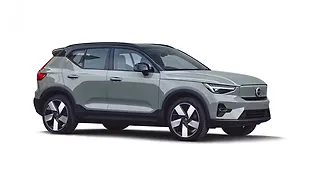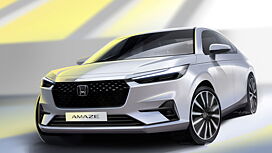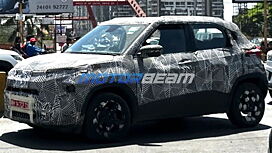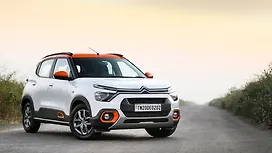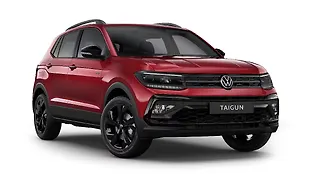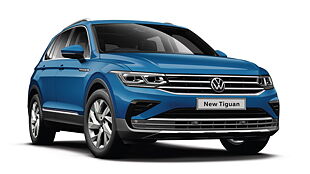What is it?

The Tiguan in its second generation has been introduced in the global markets recently. The five-seater model from Volkswagen is scheduled to debut in India soon and we took a short trip to Berlin to sample the car ahead of its India launch.
The SUV looks like an evolution of the previous car as far as the design is concerned. It has the typical no- nonsense Volkswagen face and lots of straight lines that we see on all the new VW cars. That said, it is an all-new car based on the MQB platform – the first Volkswagen SUV to get the new modular architecture. There is a difference in size compared to the predecessor – it is marginally shorter but is both longer and wider than before.

The Tiguan is almost 4.5 metres in length, which is less than the Honda CR-V and Hyundai Santa Fe - the SUVs that it should ideally compete with in India. But still larger than the BMW X1 and the Audi Q3, the SUVs that it will probably be priced close to.
From the looks perspective, I think Indian customers are going to love the Tiguan. It might not have intimidating size, but it has certain aggression, plus it looks premium with the LED headlamps, DRLs, plenty of chrome and large 18-inch wheels. The only sore point is the rear, which is dull compared to rest of the design, but I am willing to ignore that for the overall package.
How is it on the inside?

The cabin is practical. The dashboard layout is unlike the current VW cars in India and probably closer to the Audis. It does have the virtual cockpit like the TT coupe that displays navigation and lot of other information on the instrument cluster. There is also a very clever head-up display unit that shows speed, turn instructions for navigation and also speed limits of the roads you are driving on.
It has plenty of features – the infotainment system is elaborate with everything from option to mirror all sorts of phones on the centre console to creating Wi-Fi hotspot. There is an automatic open and close function for the tailgate, three zone AC and front power seats that can be adjusted in 14 ways.

The interior colour is mainly black; the upholstery has contrasting colours though, depending upon the exterior. The quality in most places is plush, there are only few bits of hard plastic in the rear that seem out of place. The NVH is decent, but some amount of engine noise is audible in the cabin. Four can comfortably be seated inside – the headroom and the knee room at the back is good enough. However, with the large transmission tunnel, the third person at the back is going to be uncomfortable.
To maximise the boot capacity, the rear bench can slide forward offering 615litre of space. The seats then fold flat in 60:40 ratio and if even that isn’t enough, the front passenger seat also tumbles making it 1655litre.
How does it drive?

There is a range of petrol and diesel engines that the Tiguan is available with in the global market. We drove the one that is relevant to India – a diesel with DSG transmission; this one, for now, has the 4MOTION AWD as standard. The engine produces 147bhp that is sent mainly to the front wheels via the seven-speed transmission. Only when the car senses loss of traction, does the system power the rear wheels. The 4MOTION can be controlled though the rotary dial near the gear lever – the options include road, snow, off-road and off-road individual.
The power is sufficient, plus the first four gears are short, so getting to triple digit speeds is very easy. The DSG gearbox is as quick as ever, it drops gears the moment you use the paddle. Also, leave it on auto and the shifts are super smooth.

The Tiguan drives like a car – there is hardly any body roll and SUV holds through corners very well. However, the ride quality of the car we drove was extremely harsh – we expect the engineers to make the suspension a lot softer on the version which will be launched in India. There is no feedback on the steering but is precise.
With the AWD and 200mm ground clearance, the Tiguan has everything to make life easy on the Indian roads. Of course, it isn’t a proper off roader, but it won’t do too badly on the country roads and during small excursions.
When can I buy one?

Volkswagen has a range of cars lined up for India over the next few months. Unfortunately, the Tiguan isn’t at the top of the list. The Ameo of course, will be launched first followed by the Polo GTI, the Passat, the Passat GTE and then the Tiguan in the first quarter of 2017. It will have only one engine option – the 2.0-litre diesel making 147bhp, mated to the seven-speed DSG gearbox.
Where will it fit in?

Volkswagen India needs to do a balancing act for the Tiguan. If the car here has similar features as the top-spec European version with AWD – the price is going to be well over Rs 30 lakh, considering it is a CKD with some amount of localisation. That would put it in competition with the BMW X1, Mercedes GLA and Audi Q3. Take out too many features and the car loses its charm. The ideal pricing of the Tiguan will be in the range of Rs 27 lakh to Rs 30 lakh, as a more practical option on the Indian roads, compared to the entry-level luxury cars.

![Volkswagen Tiguan [2017-2020] Left Front Three Quarter Volkswagen Tiguan [2017-2020] Left Front Three Quarter](https://imgd.aeplcdn.com/642x361/cw/ec/23099/Volkswagen-Tiguan-Left-Front-Three-Quarter-71293.jpg?v=201711021421&wm=1&q=80)
![Volkswagen Tiguan [2017-2020] Right Front Three Quarter Volkswagen Tiguan [2017-2020] Right Front Three Quarter](https://imgd.aeplcdn.com/642x361/cw/ec/23099/Volkswagen-Tiguan-Right-Front-Three-Quarter-71305.jpg?v=201711021421&wm=1&q=80)
![Volkswagen Tiguan [2017-2020] Right Front Three Quarter Volkswagen Tiguan [2017-2020] Right Front Three Quarter](https://imgd.aeplcdn.com/642x361/cw/ec/23099/Volkswagen-Tiguan-Right-Front-Three-Quarter-71304.jpg?v=201711021421&wm=1&q=80)
![Volkswagen Tiguan [2017-2020] Left Rear Three Quarter Volkswagen Tiguan [2017-2020] Left Rear Three Quarter](https://imgd.aeplcdn.com/642x361/cw/ec/23099/Volkswagen-Tiguan-left-rear-three-quarter-71302.jpg?v=201711021421&wm=1&q=80)
![Volkswagen Tiguan [2017-2020] Left Front Three Quarter Volkswagen Tiguan [2017-2020] Left Front Three Quarter](https://imgd.aeplcdn.com/642x361/cw/ec/23099/Volkswagen-Tiguan-Left-Front-Three-Quarter-71295.jpg?v=201711021421&wm=1&q=80)
![Volkswagen Tiguan [2017-2020] Dashboard Volkswagen Tiguan [2017-2020] Dashboard](https://imgd.aeplcdn.com/642x361/cw/ec/23099/Volkswagen-Tiguan-Dashboard-71297.jpg?v=201711021421&wm=1&q=80)
![Volkswagen Tiguan [2017-2020] Music System Volkswagen Tiguan [2017-2020] Music System](https://imgd.aeplcdn.com/642x361/cw/ec/23099/Volkswagen-Tiguan-Music-System-71303.jpg?v=201711021421&wm=1&q=80)
![Volkswagen Tiguan [2017-2020] Headlamps Volkswagen Tiguan [2017-2020] Headlamps](https://imgd.aeplcdn.com/642x361/cw/ec/23099/Volkswagen-Tiguan-Headlamps-71300.jpg?v=201711021421&wm=1&q=80)
![Volkswagen Tiguan [2017-2020] Image Volkswagen Tiguan [2017-2020] Image](https://imgd.aeplcdn.com/272x153/cw/ec/21615/Volkswagen-Tiguan-Right-Front-Three-Quarter-98786.jpg?wm=0&q=80)












